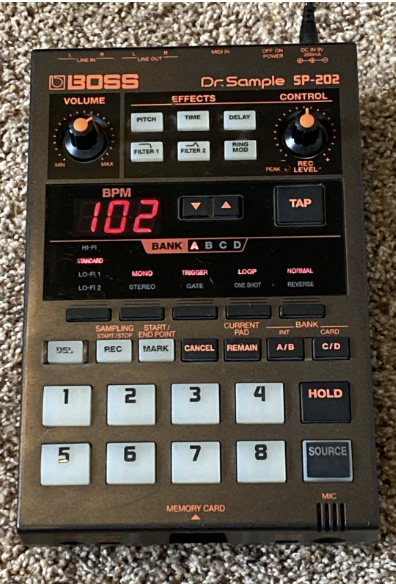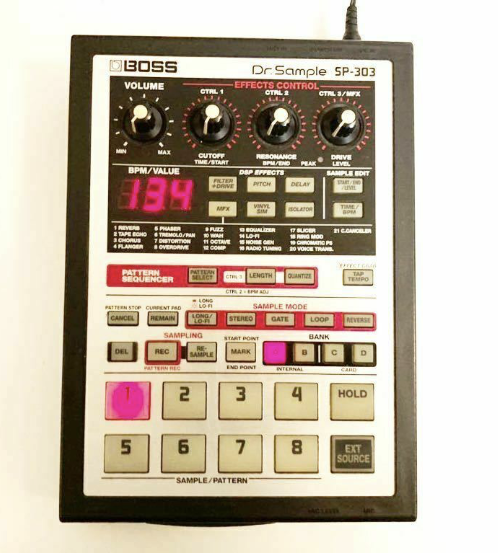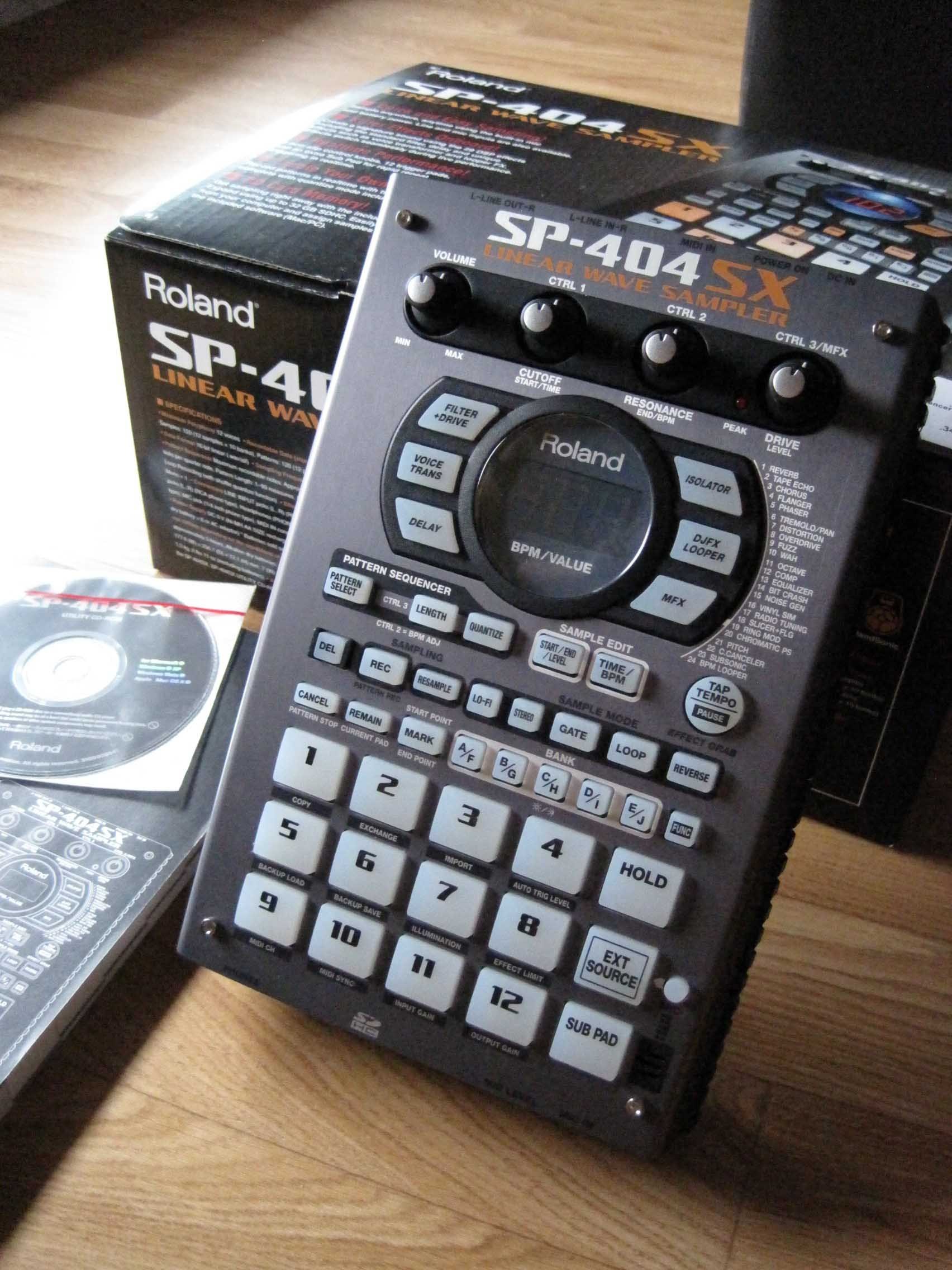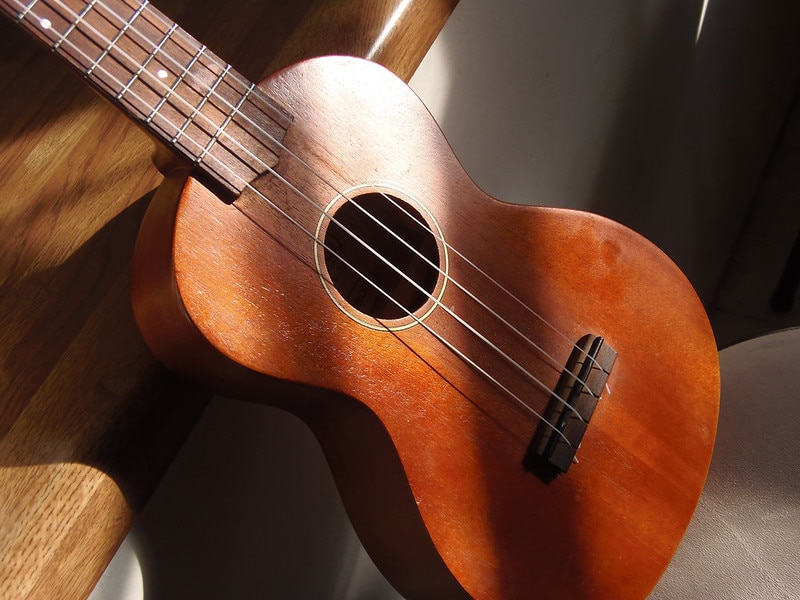
How to use MIDI: A Complete Guide for FL Studio, Logic and Ableton Live Users
April 24, 2022
How to Install A Guitar Pickup for Acoustic Guitar
May 1, 2022Without the SP404 the world of sample based music may never have become as accessible and popular as it is today. Its iconic design is impossible to miss at the fingertips of some of the most creative and forward thinking sample flippers to grace our ears.
Despite its first iteration approaching its 17th birthday this year, the SP404 continues to be the benchmark other samplers are compared to.
Let’s get to the bottom of what made the SP404 such a revolution and dig a bit deeper into some of the tips and tricks legends of the beat-making game have discovered throughout the little samplers’ lifetime.
The Rise of the SP404

The SP story begins in 1995 with the release of the Roland MS-1 a digital sampler that came with promises that wouldn’t be realized for yet a few more years.
The MS-1 promised to democratize sampling, bring it into the homes and hands of aspiring producers that couldn’t afford the more expensive samplers that were typically locked inside the doors of professional studios. And while it didn’t quite achieve that it did set the pretense for what was to come.
In 1998 its predecessor the SP202 came far closer to the mark and its redesigned workflow showed off the origins of what was to come. Featuring pads like those found on the 404 and a basic effects engine; the SP202 found its legs in the hip hop and beat-making community. Yet despite its improvements, the SP202 remained relatively niche.

The SP series didn’t gain its stopping power until the release of the SP303 in 2001.
When Madlib flipped Maria Bethânia and made Rhinestone Cowboy it was on the 303, when J Dilla flipped 10cc when producing Workinonit that too was on the 303.
The SP303 set the stage for Roland samplers to take over the world of sample based production and was followed up by the SP505 and 606. All had their own nuances that drew different types of producers to favor one over the other.
After their success, Roland decided it was time to release the sampler that would define the SP series and in 2005 along came the SP404.
It was in the years following its release that beat-making culture as we know it today was born. The SP-404 was perfectly adaptable as both a studio tool and a live performance instrument. People started to compete to make the most wild out beats they could and push the 404 to its limit.
A year after its release Low End Theory (a weekly beat comp in LA) exposed the best of the beat-making community. Names like Flying Lotus, Ras G, Samiyan, and Dibuase all cut their teeth inside those walls, supporting and trying to outdo each other.
Beatmaking was now an identity largely thanks to the SP-404.
Who Made the SP-404 Famous?
The SP-404 has been used by a plethora of artists most commonly in the genre of lo-fi hip hop but that’s not where the possibilities of the 404 end.
Hip Hop
The three most famous producers associated with old-school samplers like the 404 are Madlib, J Dilla, and Nujabes. All completely unique in their own right, each left a lasting impact on the way producers approach sampling and beat-making to this day.
While Madlib and Dilla made prime use of the SP-404, it is only a folk legend that Nujabes ever picked up the sampler.
What Madlib and Dilla achieved however was groundbreaking. Pioneering techniques such as microsampling by building tracks out of tiny pieces of other songs. This was a departure from the loop based sampling of the hip hop that came before them.
This technique was made possible by the SP series thanks to the ability to chop samples of any size and source to the 12 pads and play them live.
Experimental Electronic
Experimental producer and composer Oneohtrix Point Never first gained widespread recognition and critical acclaim with his album Replica (2011).
The album was a change in direction from his previous projects and was produced almost entirely on the SP-404.
The album acts as a great reminder that the 404 doesn’t have to be used to produce beats. Replica in its entirety features very few drum tracks, instead; focusing on sample manipulation and ambiance.
The 404s gritty textures can be heard all over the album and help to create a sense of disillusion that is hard to capture inside the sometimes sterile world of DAWs.
Experimental Pop
After relocating to Portugal Animal Collective member Noah Lennox (Panda Bear) was without his usual studio gear. The downsize did leave him with one significant piece of gear he had yet to fully immersive himself in. The SP-303.
Armed only with his 303 Lennox crafted what I can only describe as a distant college of summers past.
Released in 2007 Person Pitch uses collage techniques and heavily affected samples to create dream like layers of melancholic pop. Its sound was like nothing that he or the band had ever explored and change the trajectory of Animal Collective’s future endeavors.
When the band reunited for their next album they followed Lennox’s lead into a more sampler focused group merging the use of the SP-404 with the psychedelic instrumentation they’d become known for.
The result was their most critically acclaimed album to date Merriweather Post Pavilion.
What Can the SP-404 Actually Do?
Hearing of the success of artists that have tried their luck with this iconic piece of gear is great, but what can the SP-404 do that makes it such an important piece of gear in the music production canon.
Short answer… a lot! But let’s take a closer look.
Performance Based Sampling
While the SP-404 wasn’t the first sampler to assign samples to pads, that honor goes to the MPC series by Akai. The 404 does however make use of its pads in a pretty different way.
The design of the 404 encourages its users to experiment on the fly by putting sample playback parameters a button touch away. This was the case with the MPC. Producers are able to change how a sample plays back on the fly, helping to create more dynamic beats.
You can choose to gate your sample meaning it will only play while you press the pad down, turning this off lets the sample play out till its completion. You can also turn sample looping on and off at any time, this is great for live performances where you might want to loop something while getting ready for your next beat.
The reverse function is also front and center, letting you flip a sample on its head mid playback, taking a stale loop and turning it into something fresh again.
This methodology of performance based sampling is also present in the way the 404 handles effects.
The SP-404 has a total of 29 onboard effects which can be used via the effects buttons surrounding the LED screen. The 6 effects buttons allow for fast effect switching with 5 of these buttons mapped to commonly used fx like filter and delay, while the 6th button allows you to scroll the remaining 24 fx.
The moment an effect is triggered its parameters are adjustable using the 3 knobs at the top of the sampler.
It’s tactile and totally addictive, creating a seemingly endless amount of possibilities of how you’re going to flip a sample.
The Effects
Constantly imitated and never beaten, the effects engine on the SP-404 is a thing of legend. The 29 onboard effects are really what makes the 404 stand out.
Are some of them pretty lo-fi? Yes.
But that is what makes them sound so great. Iconic sounds like the crunchy sub bass associated with lo-fi hip hop come from the compressor effect of the 404. The warped and dirty pitching of vocal samples is a result of the unique pitch effect.
So while they’re not the cleanest effects they have a lot of personality and are instantly recognizable in some of the most important beats in history.
The one major limitation of its effects engine is that only one effect can be active at a time. Luckily there is a way around this; allowing you to add as many effects to a single sample as you want.
Resampling with Effects
The SP-404 features a resampling feature that allows you to sample internally. Say you have a sample on pad 1 and you want that same sample on pad 2. All you have to do is hit REC then RESAMPLE, choose the pad you want to record to, and then play the sample you want to duplicate.
Where resampling gets interesting however is when you get effects involved.
If you want to get deep into sample manipulation your going to want to make use of multiple effects at a time. The best way to do this is to add an effect to your sample and then use the resampling method to record the sample (effects included).
Once you’ve got your sample recorded with the effect you like, you can repeat this process endlessly! The only limit is the number of empty pads you have. This shouldn’t be too much of an issue as the SP-404 features a total of 120 pads across its 10 sample banks.
Secret Pattern Copy Technique
A frustrating aspect of the SP-404 workflow is that there’s no official way to duplicate patterns. Patterns are basically a recording of which pads you pressed in what order. It’s the primary way to create beats on 404.
Laying down a pattern is easy to do but from a songwriting perspective not being able to copy that pattern so that you can add new elements to it for a different part of your track is a huge roadblock.
Luckily Roland realized this and made the process straightforward on their later SP models. That’s no help if you’re rocking an OG 404 however. Luckily, SP-404 wizard, Flying Lotus found a way to do it and his little secret slowly made its way around music production forums.
The technique is as follows:
- Choose the pattern you wish to copy
- Move the pattern from your external memory to any pad on the A & B bank using (DEL + REC)
- Backup your 404 using (CANCEL+BANK C)
- Move the pattern back to its original pad on external memory using (DEL + REC)
- Reload the backup using (CANCEL + BANK A)
- Move the pattern you copied to internal memory to another pad on external memory using (DEL + REC) best to put it next to your original pattern
- Done! You now have 2 of the same pattern next to each other
How to Make Effect Sound Cleaner
While the lo-fi charm of the 404 is a major selling point, certain effects that tend to overdrive can be risky to use when performing live or ruin an otherwise perfect take!
Fortunately, the SP-404 has a way to prevent that from happening called Effect Limit Mode. Effect limit mode places a limiter on the 404s inbuilt effects preventing the wild oscillations of its tape delay and pitch effects from blowing out your eardrums.
To enable Effect Limit Mode press CANCEL + MFX at the same time.
You will know that it has worked when the LED screen displays L.ON. You can turn it back off again and re-enter the world of lo-fi chaos using the same button combo.




